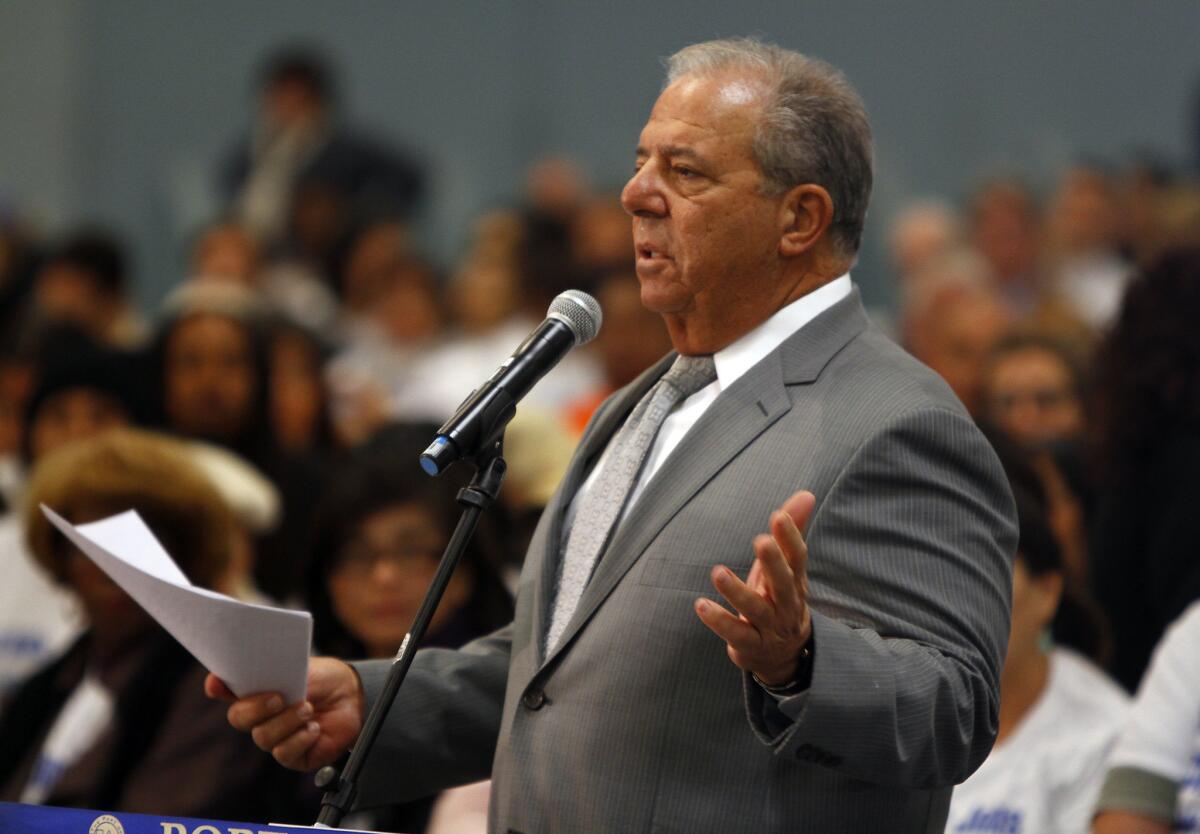Lawsuits target proposed rail yard for Los Angeles harbor

- Share via
Environmentalists and Long Beach officials are seeking a court order to stop the Port of Los Angeles from proceeding with plans to build a $500-million rail yard that could affect low-income neighborhoods nearby.
The Natural Resources Defense Council, the City of Long Beach and the Long Beach Unified School District filed lawsuits on Thursday and Friday, challenging the proposed Southern California International Gateway, a 153-acre facility that will border homes, schools and parks in West Long Beach.
The lawsuits assert that approvals for the freight yard should be set aside on the grounds that planners violated the California Environmental Quality Act by understating the environmental impact of the project and failing to thoroughly evaluate ways to reduce adverse effects.
NRDC attorneys also allege that the proposal violates state and federal civil rights laws because the project, according to its own environmental analysis, would have significant unavoidable impacts that would fall disproportionately on low-income, minority communities.
The project “typifies environmental racism,” said David Pettit, an NRDC attorney. “This project can be built away from where people live and children go to school, but the City of Los Angeles wants to put it in a low-income minority neighborhood because they think they can get away with it.”
Approved this year by the Los Angeles Harbor Commission and City Council, the planned freight yard would be built in Wilmington by the Burlington Northern Santa Fe Railway Co. It would be capable of handling up to 2.8 million 20-foot shipping containers a year by 2035 and 8,200 trucks a day.
Railroad and harbor officials say the facility will be the “greenest” of its type in the nation and employ low-emission diesel trucks, cranes, yard hostlers and locomotives.
More than 1 million truck trips a year would be eliminated on the 710 Freeway, reducing air pollution, they say, while other measures, such as sound walls and a landscaped berm, would cut noise and light pollution.
“If the SCIG is not built, air pollution and traffic in adjacent neighborhoods will actually be worse,” BNSF officials said in a prepared statement. “After eight years of study, the indepth environmental review of this project demonstrates that continuation of existing truck operations will not reduce pollution the way SCIG can.”
NRDC attorneys contend, however, that the port and BNSF did not adequately consider using the cleanest locomotives, expanding on-dock rail services to reduce truck trips and zero emissions yard equipment.
Among other things, Long Beach officials have called for a buffer zone, a long-term commitment to zero-emissions technology and a fund to help nearby residents install filters or other devices to protect them from air pollution.
Meanwhile, Long Beach Unified alleges the Port of Los Angeles failed to apply special state standards for evaluating the effect of emissions on students. The district operates several schools near the site, including one -- Elizabeth Hudson Elementary -- that is only 210 feet away.
“Our school district’s primary goal is to provide a safe learning environment,” said Supt. Christopher J. Steinhauser. “We cannot support a project that would pose any health risks to our students and staff.”
ALSO:
San Onofre nuclear plant closure tied to finances
San Gabriel Valley’s 626 Night Market returns this weekend
‘Night Stalker’ prosecutor says Ramirez death ends ‘tragic period’
Twitter: @DanielJosephWei
More to Read
Sign up for Essential California
The most important California stories and recommendations in your inbox every morning.
You may occasionally receive promotional content from the Los Angeles Times.











